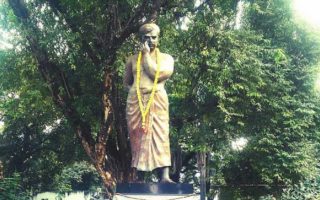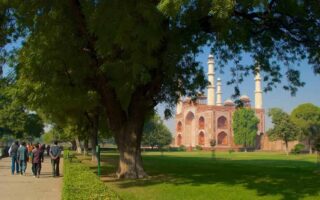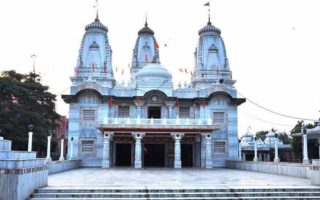Uttar Pradesh is rich in museums that are instrumental in exploring the grandeur of the bygone era. The museums are the showcases of state’s art, culture, craft, history and heritage and illustrate the cultural richness of different periods of history. There are a number of Museums in Uttar Pradesh that one can visit. Most of these places are run under the authority of Government of the state while a few of them are also run by private organizations.
These museums house huge collections of artifacts, Mughal paintings, miniature paintings, weapons, and instruments, marble pillars, coins, and textiles. Bharat Kala Museum is one of the most popular Museums in Uttar Pradesh that attracts a number of tourists every year. The myriad collection of beautiful paintings, textiles, and sculptures form an important part of this museum. These artifacts belong to the dynasties of Gupta, Maurya, and Shunga periods. One can also get to se sculptures belonging to Gandhara School of art.
Sarnath Museum hoses some of the finest pieces of Buddhist art. There is a plethora of statues, sculptures, and other architectural remains that form part o this splendid building. The famous Lion Capital is the distinguishing feature of this storehouse. This archeological museum has a huge collection of bronze sculptures. The government museum of Mathura has a collection of bas reliefs, coins, terracotta and other antiquarians belonging to the period of Mathura region.
One of the other Museums in Uttar Pradesh that stores several artifacts and stone images is Allahabad Museum. There are carved pillars that belong to the centuries ranging from 3rd century to 12th century AD. An impressive collection that has several themes including dancing, feasting, and hunting scenes forms the part of the museum. Considered as the main tourist attraction of the state, this museum is also known for the huge collection of coins belonging to dynasties of Gupta and Kushana periods.
State Museum of Lucknow is famous for Egyptian mummies, rare coins, an ancient sarcophagus, paintings form 16th century, and a number of stolen sculptures. One can also get to have a glimpse of “Panchmukhi Shivling” and enormous coin collection. Zodiac coins belonging to Jehangir period are also stored at the museum.
In addition, there are a number of other museums in Uttar Pradesh that are worth visiting. These include Archeological Museum of Varanasi, Crafts Museum of Lucknow, Allahabad Planetarium, and Bundelkhand Museum in Banda. History enthusiasts can get a deep insight into the bygone era and get excellent opportunity to enjoy the charm of the past.
Allahabad Museum
- Location: Near Alfred Park, Allahabad
- Attraction: Sculptures from Gupta and Shunga dynasties
- Time to visit: 9.30 in the morning to 6.00 in the evening
- Closed on: Monday
- Time required: 1-2 hours
- Entry fee: Indians: INR-50, Foreigners: INR-500
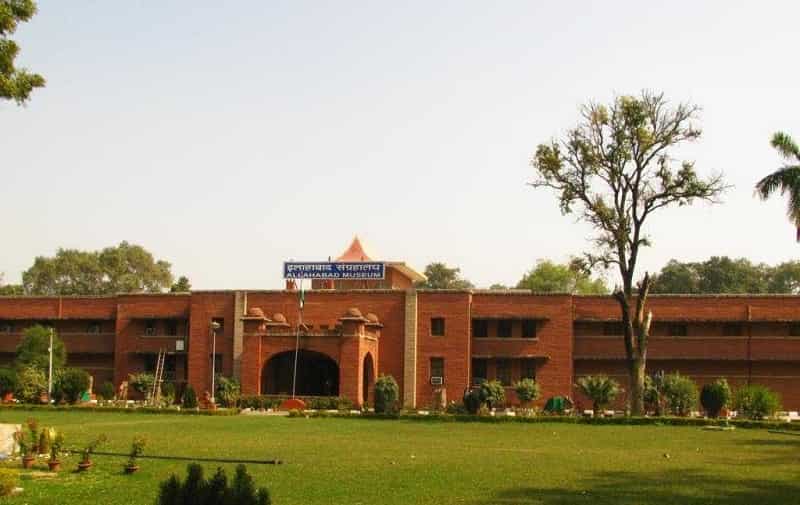
Allahabad Museum is one of the well known museums of Uttar Pradesh and is a major tourist attraction. Inaugurated by Jawaharlal Nehru on the occasion of India’s independence in 1947, this museum is distinguished for the artifacts, archeological remains, and exhibits of natural history. Out of the artifacts that are stored in the museum, some of them were donated by Jawaharlal himself.
Counted as one of the best maintained museums of the state, Allahabad Museum consists of 18 galleries that have a breathtaking number of terracotta, textiles, weapons, statues, sculptures, Buddhist artifacts etc. One can have the treat of watching ancient artworks that belong to prehistoric times. Some of the archeological remains of Indus Valley Civilization are also placed here. The museum has a collection of land grants, Buddhist thanks, and land grants that belong to medieval period; one can also get to see personal belongings of Nehru and a number of other items that date back to freedom movement.
The other antiquities that form part of the prestigious museum include carved pillars from temples, carved images made in stone belonging to the time period from third century BC to twelfth century AD. This encompasses a number of dynasties of ancient as well as medieval era. In addition, Allahabad Museum is the storehouse of famous schools of sculptures namely Kaushambi, Gandhara, and Mathura.
Another interesting collection for which the museum is famous includes terracotta; the collection is one of its own kinds and is among the largest one in the entire world. These terracotta images are based on several themes like dancing and feasting scenes. The coin collection from Gupta and Kushana era are placed here and form a vast part of the museum. The visitors can also get to see Sanskrit manuscripts from as early as 16th century.
There are as many as 400 sculptures that have been categorized according to different sects. A number of brahmanical gods and Buddhist deities form part of these sculptures. The past 25 years have seen a huge addition of the antiquities to Allahabad Museum.
Lucknow State Museum
- Location: Lucknow, Uttar Pradesh
- Attraction: Mummy from Egypt
- Time to Visit: 10.30 in the morning to 4.30 in the evening
- Closed on: Monday
- Time required: 1-2 hours
- Entry fee: Indians: INR-5, Foreigners: INR-100
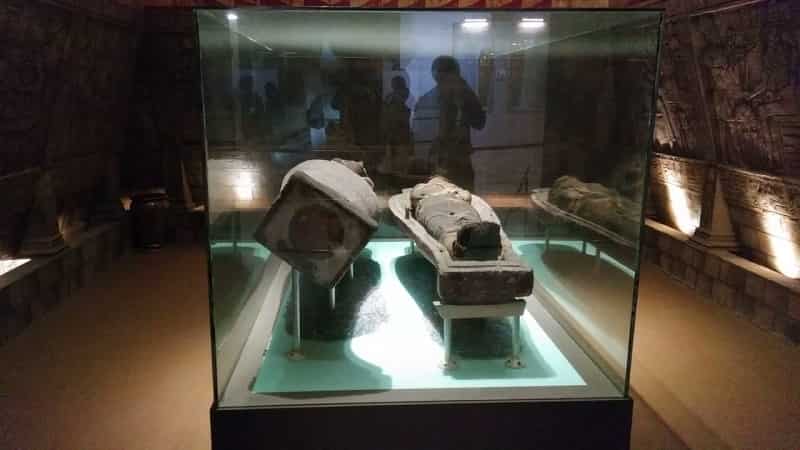
Lucknow State Museum is located near Banarsi Bagh, near Hazratganj. It is not only a museum but also an archive. The three-storey building of the museum comprises numerous sculpture, natural history exhibits, textiles, and coins. Established in 1863, the place is a combination of museum as well as archive.
This multipurpose museum stores a vast collection of paintings, statues, handicraft items, bronze artifacts, anthropological specimen, decorative items, and other notable objects. The entire building has been divided into several sections like numismatic, ethnography, natural history and many more. Lucknow State Museum is among the oldest museums and has a vivid collection of artworks.
This spectacular place is a part of zoological gardens of Prince of Wales. The original collection comprised of antique pieces from Awadh and other works that showcased Indian mythology. Later a vast number of items were added. The remains excavated at Kapilvastu were also placed in this unique building. The museum boasts of some of the rare and prized possessions. Some of the antique pieces that have remained part of history include a wine jar with the name of Mughal Emperor Aurangzeb engraved on it, a anthropomorphic figure, a number of coins in gold and silver, and remains of a fossil plant. Another notable feature of Lucknow State Museum is the presence of an Egyptian Mummy.
One can also visit the place for a wooden sarcophagus that belongs to the period dating 1000 years BC. Other unique items that are present in the premises are Balram’s sculpture in stone, a statue of Saraswati, and a five-faced Shiva lingam. One can also get to see a pistol belonging to the freedom fighter Chandrasekhar Azad. The archaeology section comprises of the artworks excavated from various sites of Uttar Pradesh. A Chamkali in jade that bears the name Jahangir and a Persian copy of Harivansha are worth noticing.
Lucknow State Museum attracts a number of visitors and history enthusiasts and is a site worth-visiting.
Bharat Kala Bhawan
- Location: Varanasi, Uttar Pradesh
- Attraction: Art galleries
- Time to visit: 11.00 in the morning to 4.30 in the evening in the months between July and April, 7.30 in the morning to 12.30 in noon in months between May and June.
- Closed on: Sunday and Public Holidays.
- Time required: 1-2 hours
- Entry fee: Indians: INR-20, Foreigners: INR-250
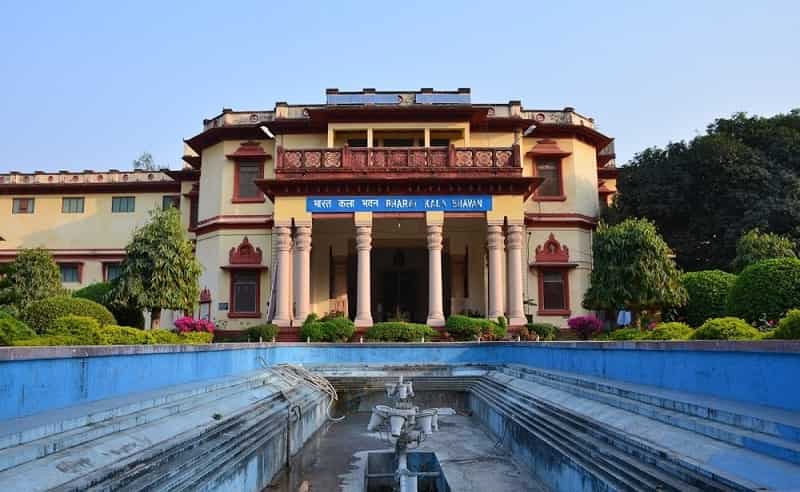
Bharat Kala Bhawan is a brilliant showcase of India’s art, craft, and heritage. Developed under the guidance of Raj Krishnadas, the museum is categorized into several sections. Located inside Banaras Hindu University, this architectural museum is the storehouse of several sculpture and artworks that belong to the Buddhist and Hindu religions.
Established in 1920, Bharat Kala Bhawan is famous for its unique paintings and textiles. A huge collection of the personal belongings of Krishandas are also present here. One can get to see a vast number of sculptures and miniature paintings that belong to Mughal period. The premises have been divided into sections like Malviya gallery, painting Gallery, archeological gallery, Nicholas gallery, treasure gallery, and sculpture gallery. Considered as one of the best maintained centers of art, the museum is widely visited by a large number of tourists.
The main hall comprises of art works including paintings and sculptures. One can also get to see an exquisitely beautiful image of Lord Krishna who is shown to be standing on a single leg and trying to lift a stone with one hand. The figurine is supposed to be showing the famous incident of lifting the massive Govardhan Mountain on his hand. A number of other sculptures of the Lord indicate his worship in Kashi in 16th century. The miniature paintings from Mughal period are quite ravishing. One can get to know a lot about Mughal courts and the code of conduct that was followed at that time.
Bharat Kala Bhawan is the storehouse of terracotta and bronze images, beads, works of ivory, ornamental items, literary documents, seals, pottery, and other antiquities from Gujarat and Rajasthan. Illustrations from Mrigavati, Shahnama, Kalpa Sutra, and Hamzanama are the main attraction of the place. Utilitarian items from Mauryan, Gupta, and Shunga periods as well as household items from Indus Valley civilization form an important part of the museum. One of the famous stupa of Buddhism from Bharhut is worth-watching. The other distinguishing feature of the museum is the presence of statues from Mathura and Gandhara schools of art. The textile section comprises of silk items from Varanasi, embroidery from Kashmir, and handkerchiefs from Chambal.
Bharat Kala Bhawan stores some of the most priced possessions of Indian heritage. Those coming on a visit to Uttar Pradesh must not forget to spend some time here.
Sarnath Museum
- Location: Sarnath, Uttar Pradesh
- Attraction: Artifacts
- Time to visit: 10.00 in the morning to 5.00 in the evening
- Closed on: Friday
- Time required: 1-2 hours
- Entry fee: Indians: INR-25, Foreigners: INR-100
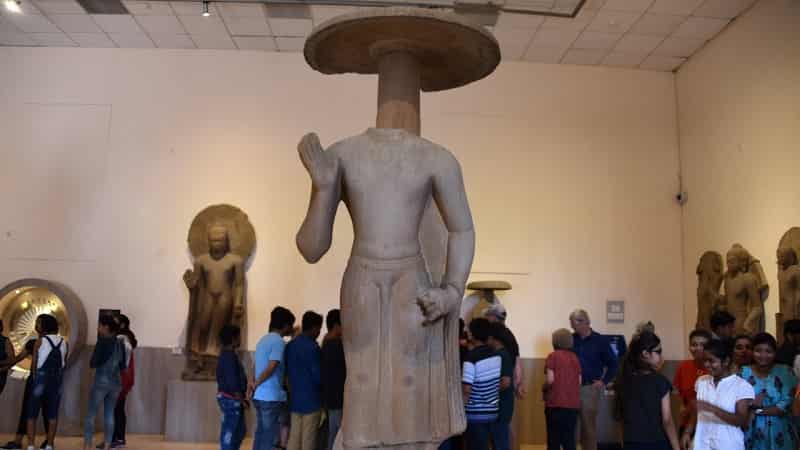
Sarnath museum of Uttar Pradesh is renowned for the collection of artworks belonging to the bygone era of Gupta, Mauryan, and Kushana dynasties. Also called Archeological Museum, it is one of the unique storehouses of South Asia. Sarnath itself has been the hub of several religious and cultural activities from thousand of years. The museum’s vast collection of antiquities and sculptures indicates that Sarnath has been the center of art and craft.
The most distinguishing feature of Sarnath museum is the Ashoka’s famous Lion Capital. It is the first sculpture that one comes to see after entering the premises. This exquisite polished sculpture is made from yellowish sandstone. There are four lions facing back to back and each one of them is facing different direction. At the base o Lion Capital is a set of 4 wheels out of which Dharmachakra Wheel, the most famous one, represents the enlightenment of Buddha. The images of bull, lion, horse, and an elephant have also been depicted at the base. Each one of these animals preaches one to inculcate in himself the moral virtues and follow the path of truth.
Sarnath museum also comprise of several images of Buddha and other artistic remain of Buddhism. In fact, all the items recovered from excavations at Sarnath have been placed here. An impressive artifact that is present in the premises is of Buddha; it belongs to 5th century and shows him in deep mediation. Figures of Bodhisattvas in different postures are also worth watching. One can admire the beauty of his standing image and also admire his statue with multiple hands.
There are, in total, 5 galleries here that store statues and antiquities from third century BC to twelfth century AD. The galleries that are situated in the northern direction are called Tathagata and Triratna. Tathagata is the other name of Buddha. The main hall called Shakyasimha and is followed by Trimurti and Ashutosh galleries in south. The verandahs that go by the names Shilparatna and Vastumandana are located in the south and north directions respectively.
The exhibits of Triratna are prized possessions of the gallery. They include exquisitely beautiful images of Tara, Bodhisattva Padmapani, Jambhala, Vasudhara, and Siddhakavira. This portion of Sarnath museum also comprises of illustrative depictions of Nagas protecting Ramagrama stupa, Kumardevi inscriptions, and incidents from life of Buddha. As one visits Tathagata gallery, one can have a glimpse of images of Buddha in various forms and postures. Images of Nilakantha, Padmapani, and preaching Buddha are some of the notable artworks of Sarnath.
At Trimurti, a visitor can notice lovely images of various Hindu deities like Trimurti (Brahma, Shiva, and Vishnu), Durga, Saraswati, and Surya. Stucco and animal figures also form part of this particular section. Ashutosh gallery also has exhibits of deities like Shiva, Brahma, Vishnu, Ganesha, Parvati, Bhairava etc.
Government Museum
- Location: Mathura, Uttar Pradesh
- Attraction: Mathura art works
- Time to visit: 10.30 in the morning to 4.30 in the evening between the months of July and April, 7.30 to 12.30 in the months of May and June
- Closed on: Second Sunday, Monday, Gazetted holidays
- Time required: 1-2
- Entry fee: Indians: INR-5, Foreigners: INR-25
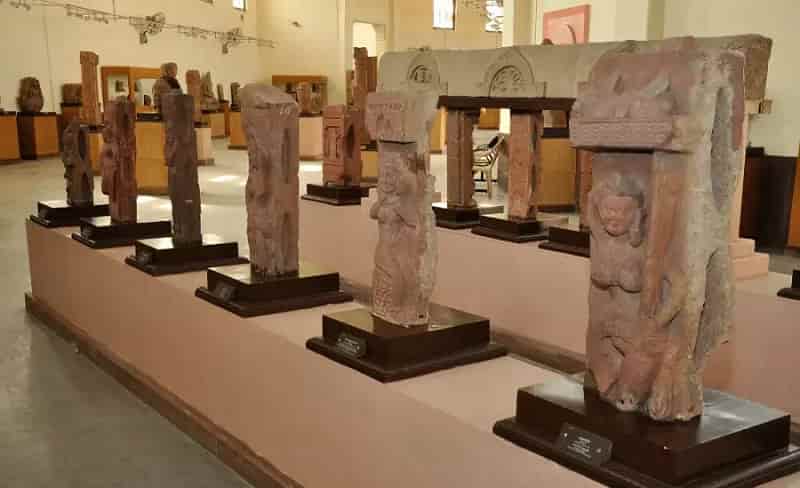
Founded by F.S. Growse, Government Museum is an exquisite collection of the antiquities that belong to Mathura school of art. The museum is the storehouse of the art works that were unearthed by Growse, Fuhrer, and Cunningham. The location of the building was shifted to the present destination in 1930. The museum has a vast collection of antique pieces from Mathura that belong to the period between third century BC and twelfth century AD. These comprise of coins in bronze, silver, and gold, several seals, paintings, pottery, and terracotta collections.
Housed in an octagonal shaped building of red sandstone, the art works that housed and need a special mention are bronze items, bricks, bas reliefs, and multiple inscriptions belonging to different periods. The terracotta pieces at Government Museum include figures of mother goddess, and plaques form Gupta, Shunga, and Kushana dynasties. A perfect place for art connoisseurs, the museum is the repository of images belonging to Buddha and Jain periods. Several images of Yakshas and Yakshinis that are symbolic of Buddhism have also found place here.
One can find images of Buddha in stone as well as in sculpture. One of the most distinguished pieces of art that is placed at Government Museum is the headless sculpture of Kanishka; the image is shown wearing large boots and a sword in both hands. The excavation remains at Govindnagar have also been placed here. These relics belong to Gupta and Kushana periods.
